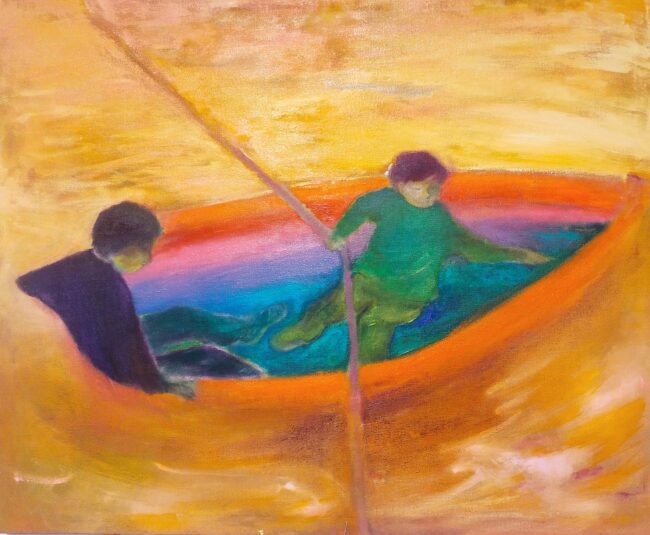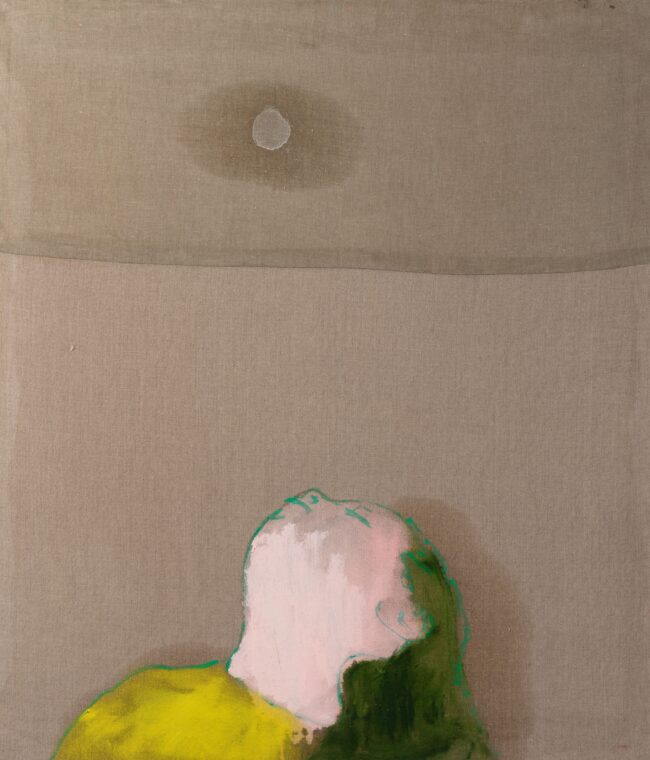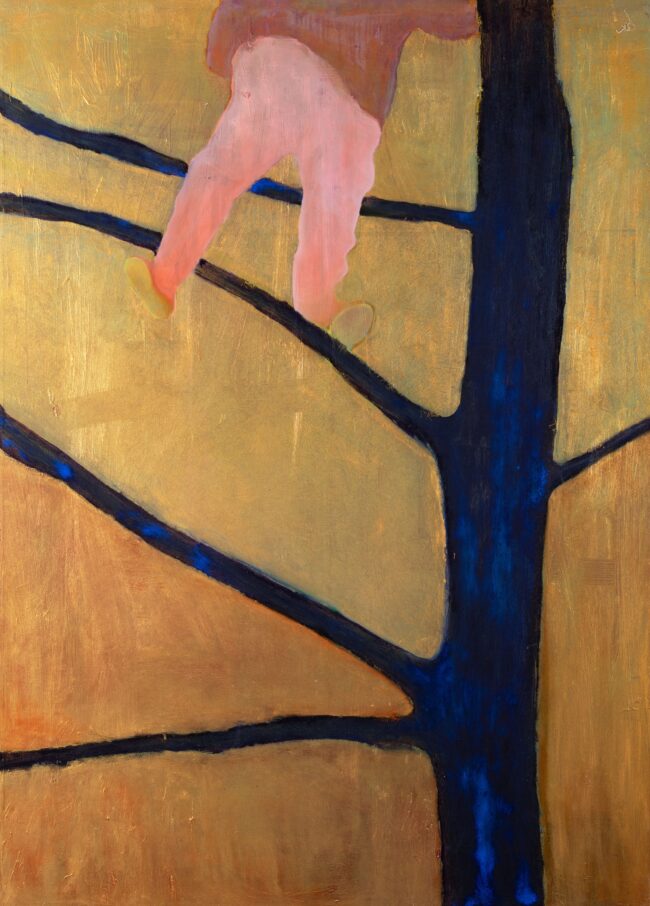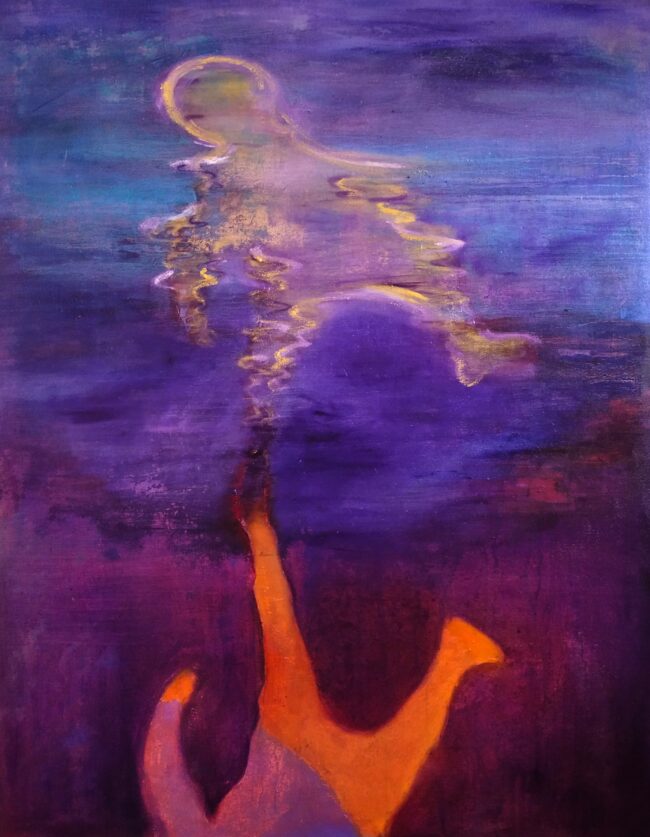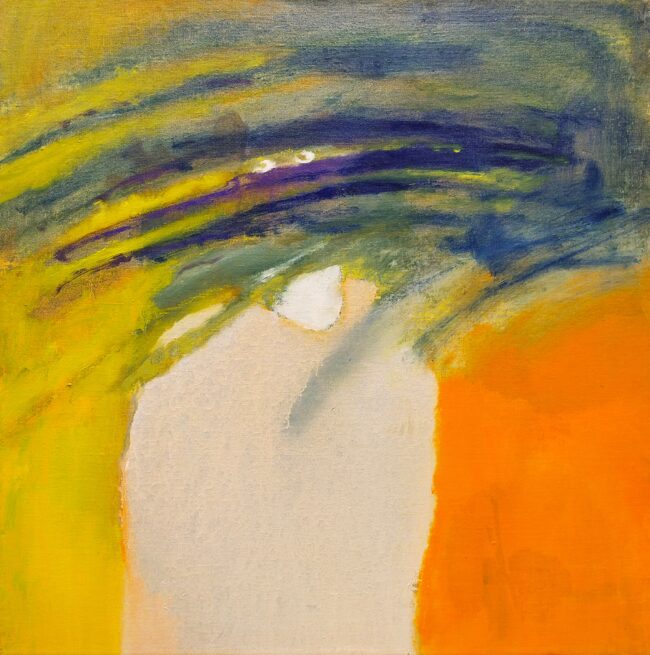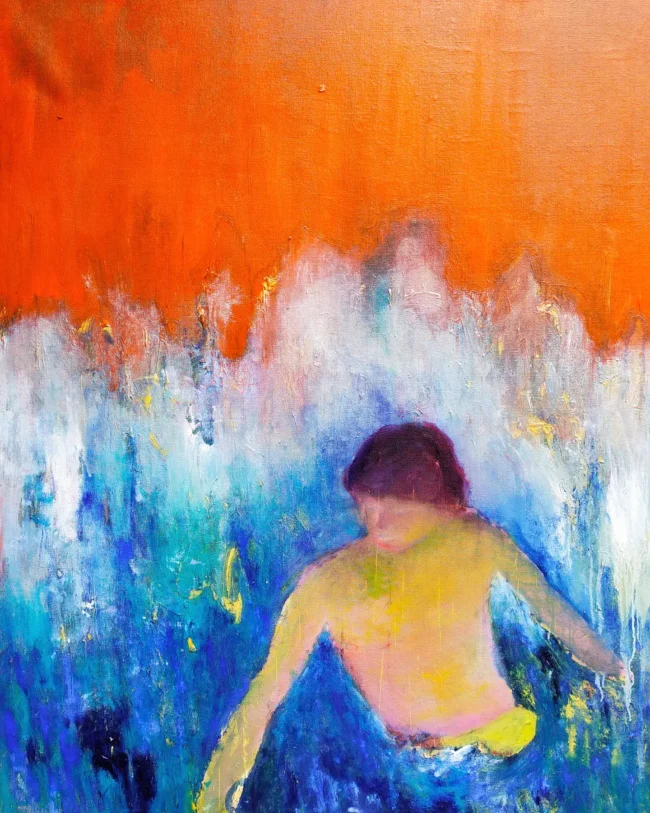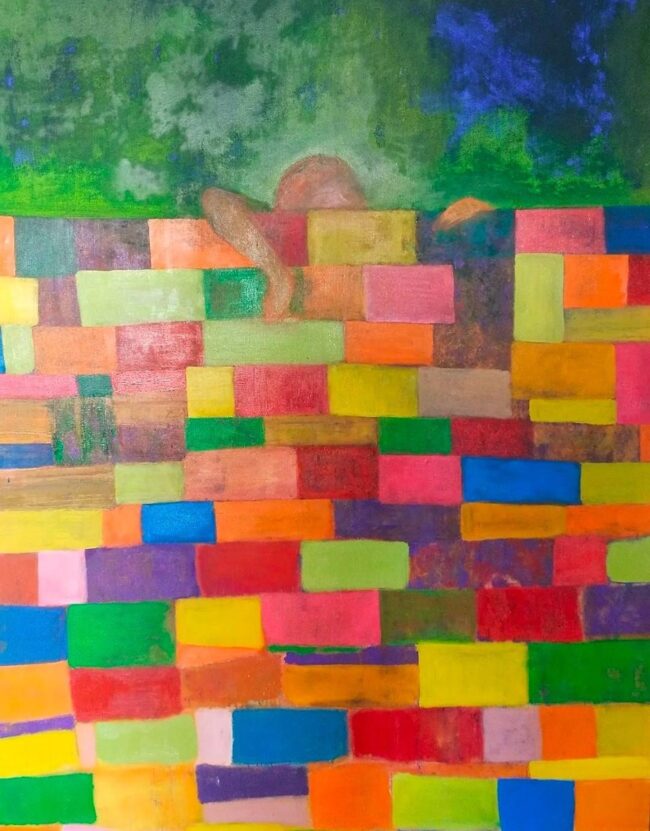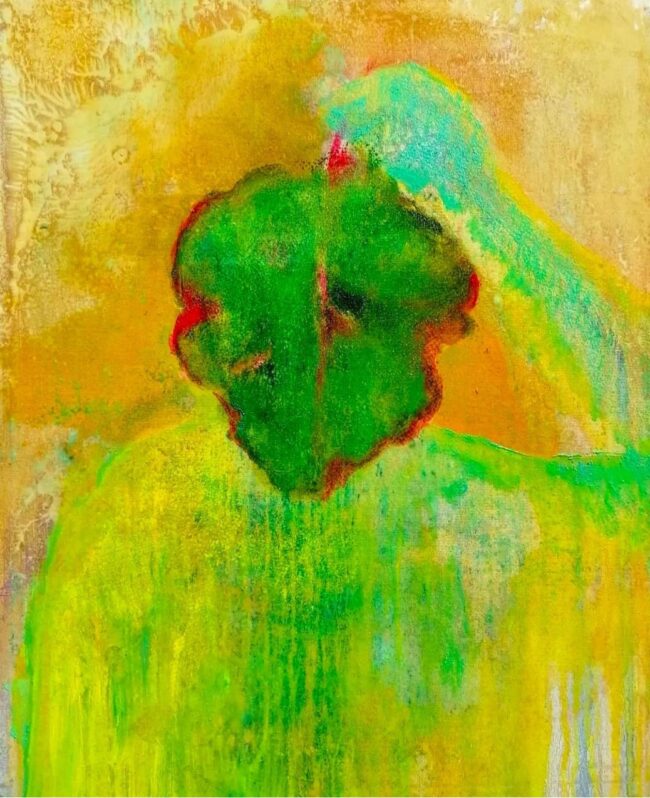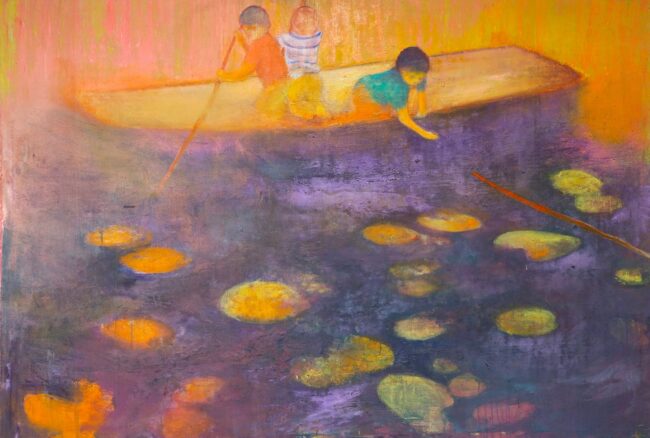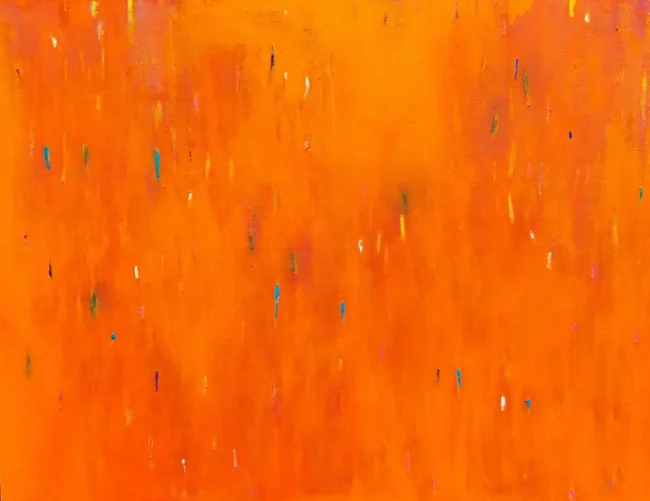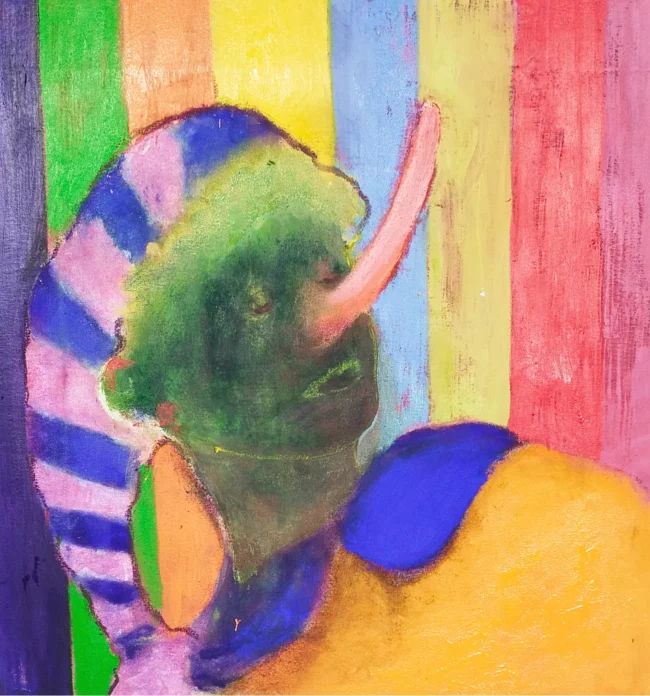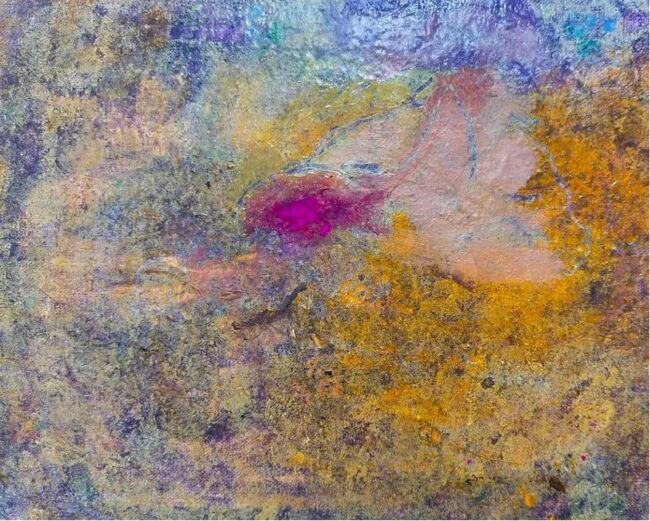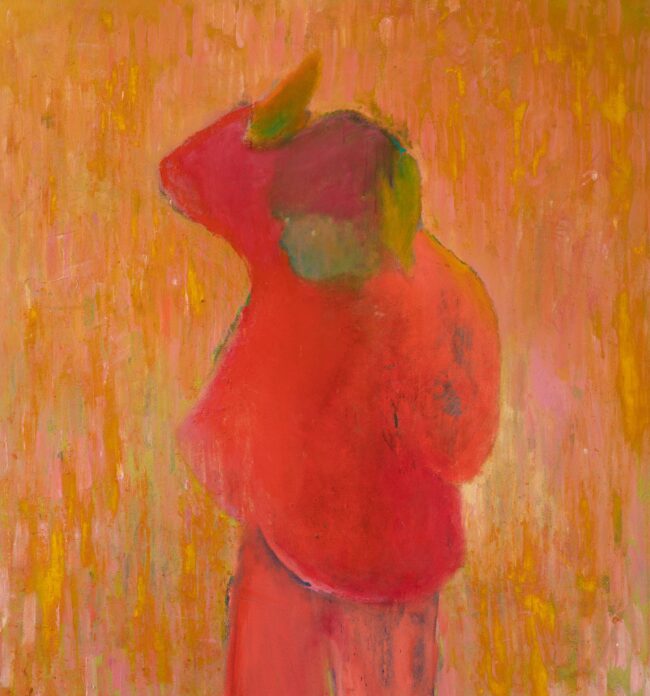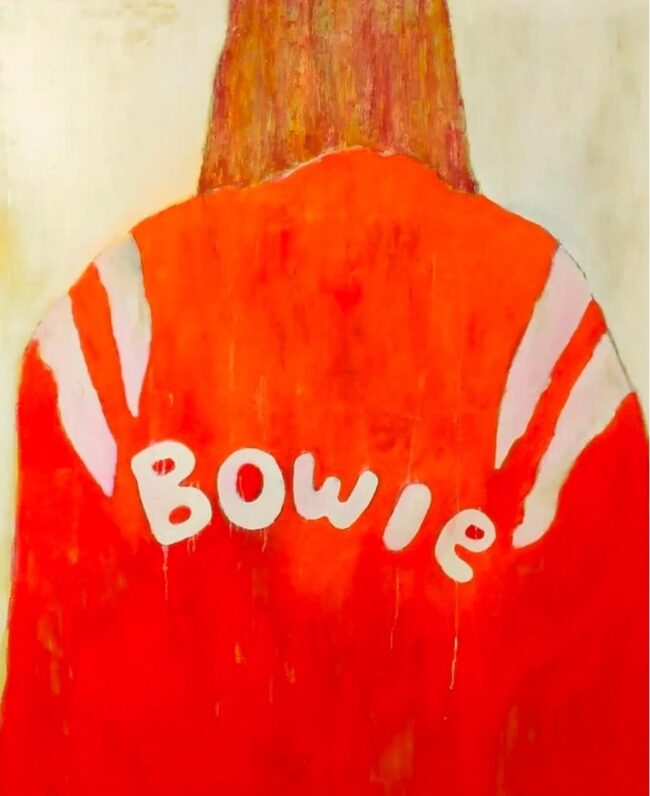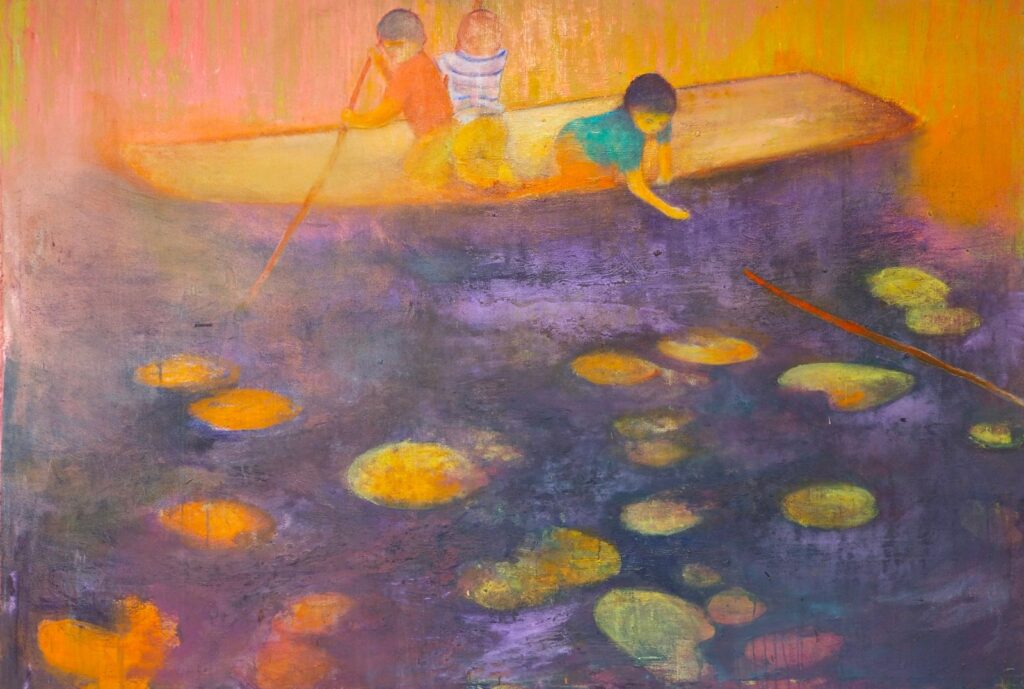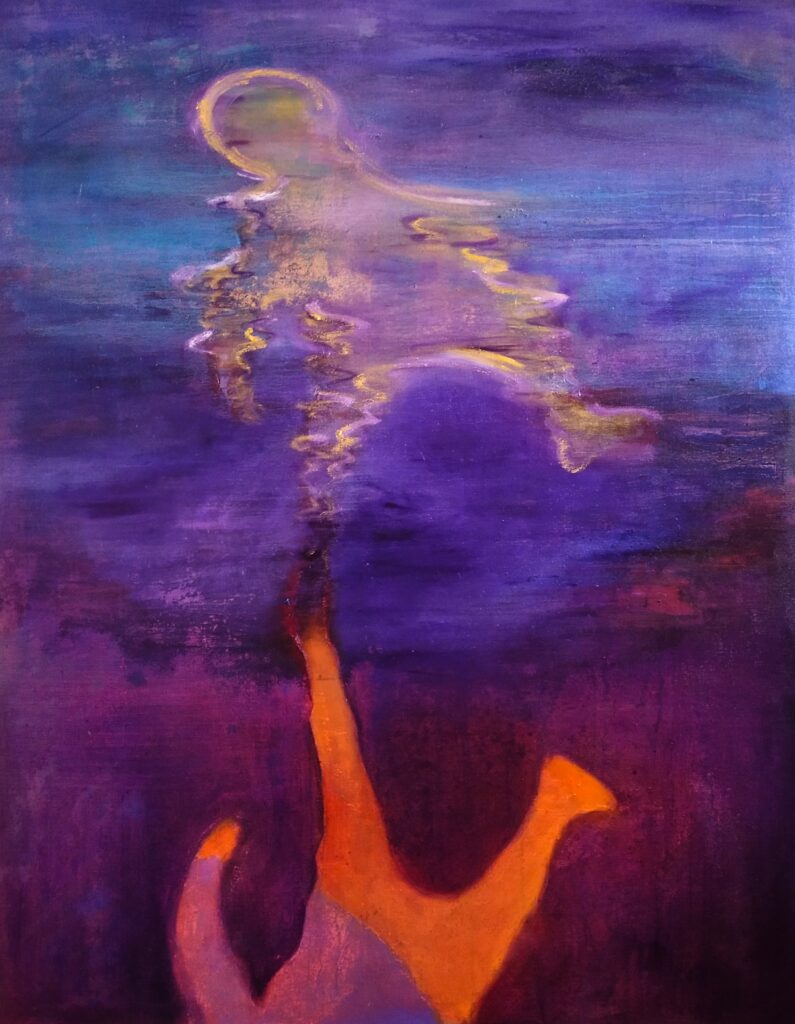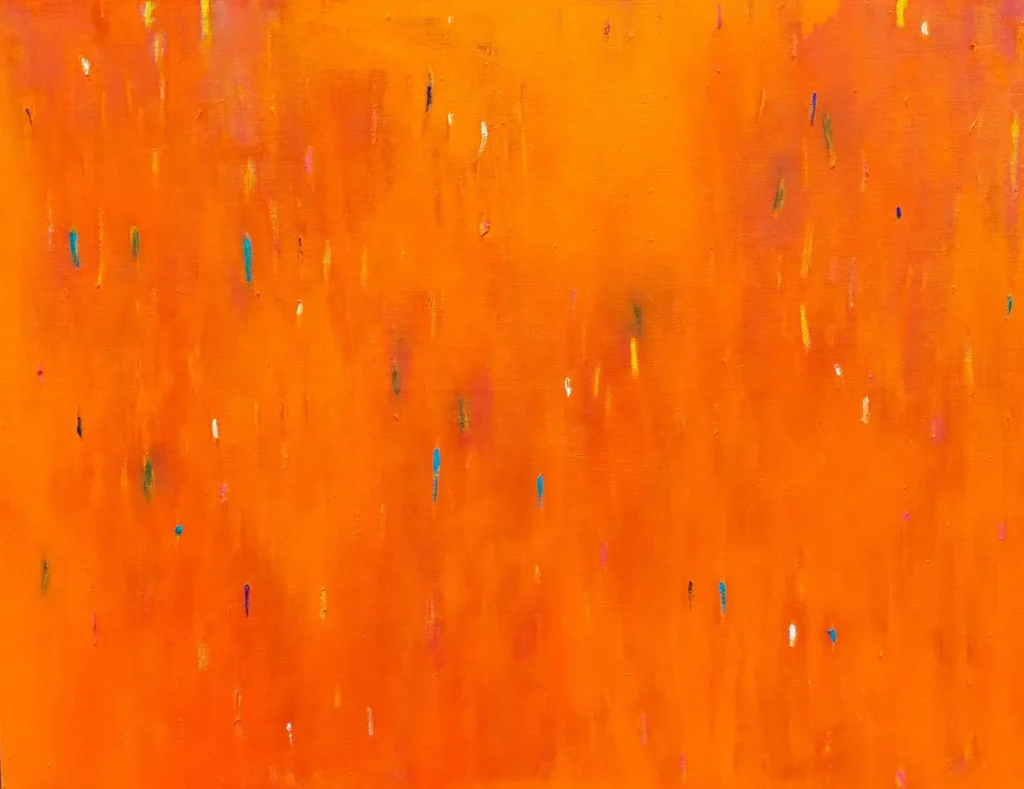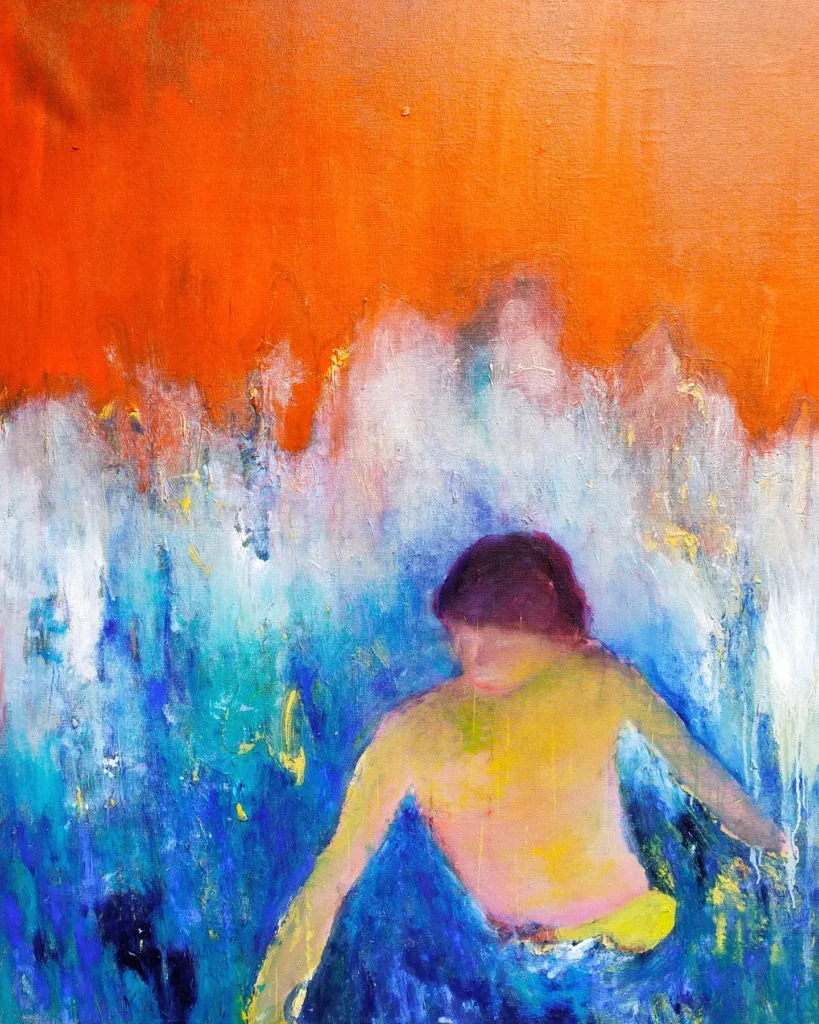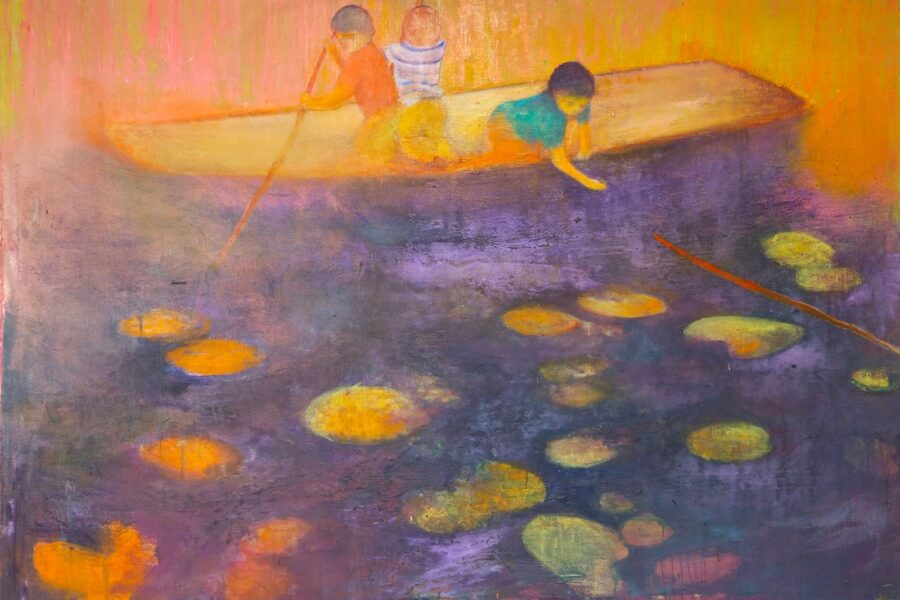Opening on November 6th 2023, “DAYGLO“ is going be Jan Urant‘s first exhibition at the gallery twenty-six, showcasing his latest series of works, which is to be considered the outcome of a recent shift within his oeuvre: his moving towards individual storytelling, but abstracting it, thereby treating both figuration and storytelling in an utterly idiosyncraticly abstracted sense so that the implications of abstraction go far beyond form, content and style: it‘s where his technical considerations and artifices come into play, that the utter sophistication of his art becomes comprehensible:
Reality gets abstracted by the artist as he blends stories and memories, that accumulate around him through himself, friends and acquaintances, powerfully utilizing the sense of color and space, putting special emphasis on the “field“ quality, therefore working in oil on canvas, adding dry pigment, sometimes using iridescent pigments (as they are shining when looked at from different angles, and even fluorescent, which is why they are sometimes applied as layers).
Things of everyday life, be it observations, stories or memories about time and his surroundings trigger some sort of excitement within Urant, which makes him search for a gesture that genuinely represents everything there is about it in his mind, that really exactly embodies how he feels about it, using photographs, the internet or magazines.
The striking image compositions have a certain sense of reduction to them, as far as the number of pictorial elements and the illusion of space are concerned, which is why one might find that Urant‘s paintings breathe the spirit of the Nabis in some kind of way.
Far beyond the directness and the intensity of the first encounter between the viewers and the works of art, a game of co-creation unfolds in the process of looking. In the viewer’s presence the paintings come to life, a new entity emerges, during an intimate dialogue between picture and viewer, whichis essential to the artist:
“It‘s about the ability to see something as a whole, but also to see something anew, each time people look at it.“
Looking at the painterly particularities of these paintings, the dreamy, other-wordly atmosphere they exude, spontaneous associations with the aethetics of Pierre Bonnard, John Ronald Craigie Aitchison, Patrick Heron or Howard Hodgkin might be evoked, which might appaer to contrast sharply with the title of the exhibition, for usually the term “dayglo“ refers to luminescent paint, the utterly specific, radiant energy of paint that emits visible light through fluorescence, phosphorescence, or radioluminescence, to neon colors.
Taking into account the astonishing psychological, socio-cultural and humanities analysis potential of Urant‘s oeuvre, apart from the transformative impact of light, respectively color, and their key role, there is another key element to it, the implications of which are as far-reaching as they are fascinating: the “field“ quality (of the sense of color and space).
On the one hand, there is an extremely powerful art-historical line of tradition (first identified and suggested by Clement Greenberg), which is indisputably approached – and thus inevitably co-evoked in parts; on the other hand, it might be valid to trace still underlying connections to psychological considerations:
Carl Ransom Rogers‘s, person-centered approach is founded on the basic assumption, that all individuals (organisms) exist in a continually changing world of experience (phenomenal field) of which they are the center, reacting to the field as it is experienced and perceived. This perceptual field is “reality” for the individual.
A portion of the total perceptual field gradually becomes differentiated as the self.
As experiences occur in the life of the individual, they are either (a) symbolized, perceived and organized into some relation to the self, (b) ignored because there is no perceived relationship to the self structure, or (c) denied symbolization or given distorted symbolization because the experience is inconsistent with the structure of the self.
Symbolization bridges the gap between grasping the significance of something and conferring meaning.
Two aspects are crucial in this respect with regard to Jan Urant’s art as it is shown in his exhibition “DAYGLO”:
Firstly, Rogers‘s concept of the perceptual field as the viewer‘s reality becomes intertwined with the “field“ quality Urant emphazises in his work. (“It‘s about the ability to perceive something as a whole, but also to see it anew each time you look at it.“)
Secondly, the artist‘s above mentioned search for an image of a certain gesture exactly matching his inner/artistic requirements, is to be regarded as his symbolizing his (artistic) reaction to his experience and perception – thereby both grasping all of its significance and conferring its entire real meaning.
In that respect, looking at Jan Urant‘s works of art might even support the process at the end of which Rogers imagined us to have become a “fully functioning person“, for even if their subject matter is primarily based on memories, their DAYGLO-quaity is particularly suited to opening one’s spirit to what is going on now, and discover in that present process whatever structure it appears to have.
